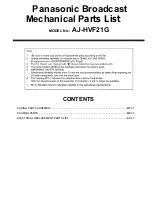
Maintenance
24
SS-SVX004C-EN
Troubleshooting
WARNING
Hazardous Service Procedures!
Failure to follow all precautions in this manual and on
the tags, stickers, and labels could result in death or
serious injury. Technicians, in order to protect
themselves from potential electrical, mechanical, and
chemical hazards, MUST follow precautions in this
manual and on the tags, stickers, and labels, as well as
the following instructions: Unless specified otherwise,
disconnect all electrical power including remote
disconnect and discharge all energy storing devices
such as capacitors before servicing. Follow proper
lockout/tagout procedures to ensure the power can not
be inadvertently energized.When necessary to work
with live electrical components, have a qualified
licensed electrician or other individual who has been
trained in handling live electrical components perform
these tasks.
Symptom
Probable Cause
Recommendation
Control is Erratic
Wiring improperly connected or broken.
Check wiring against electrical drawing.
Unit Fails to Start
Incorrect phasing or voltage.
Correct phase or voltage input.
Power failure.
•
Check power source, power inlet and fuses.
•
Check control cables and connections.
Overload protection tripped.
Check for cause of overload and re-set circuit
breaker(s) or motor starter protector(s).
Condensing Unit Head Pressure Too High
Non-condensable gas or air in system.
Recover system, evacuate per
and recharge.
Install new drier/strainer.
Low condensing unit airflow (indicated by
excessive warm air leaving the condensing unit
fan).
Open air passages. Clean coil. Check condensing
unit fan(s).
Overcharge of refrigerant.
Reclaim excess refrigerant from system.
Condensing unit fan not operating.
•
Check main voltage power source to unit.
•
Check fan motor starter protector,
contactor, fan cycling switch or fan speed
controller.
•
Check pressure/temperature operating
switches and motor. Replace as needed.
Condensing unit pressure regulating valve
setting too high.
Adjust to obtain correct pressure.
Condensing Unit Head Pressure Too Low
Loss of refrigerant (indicated by high superheat,
low sub-cooling temperature and low suction
pressure).
Locate and repair leak. Recharge system.
Condensing unit fan controls not set properly. Adjust or repair controls.
Control pressure set too low.
R407C- Readjust to 320 psig.
Suction Pressure Too Low
Loss of refrigerant (excessive bubbles in sight
glass).
Locate leak and repair. Recharge system.
Expansion valve stuck or obstructed (short cycle
or continuous running).
Remove and clean or replace valve.
Clogged drier/strainer (feels cold).
Replace with new drier/strainer.
Dirty air filters.
Clean/replace filters on AHU.









































